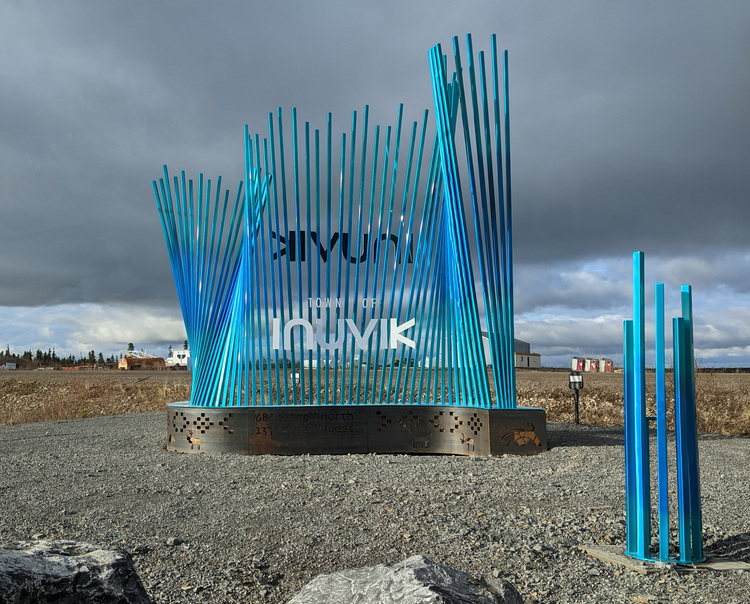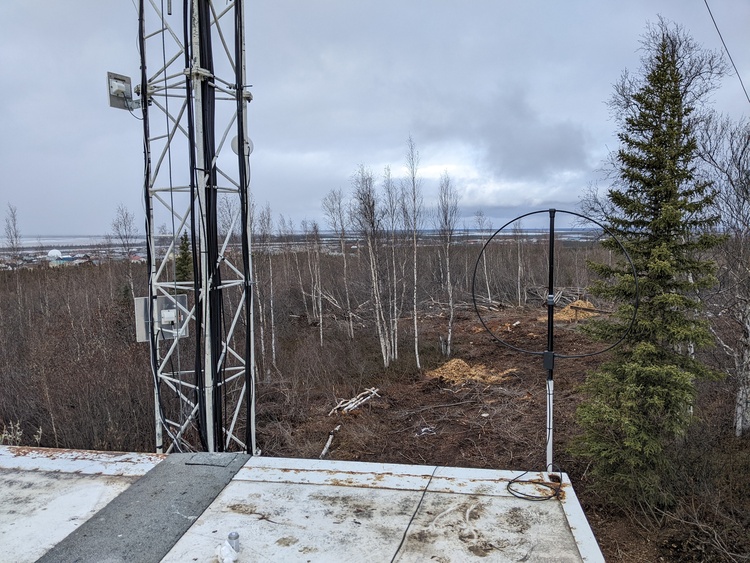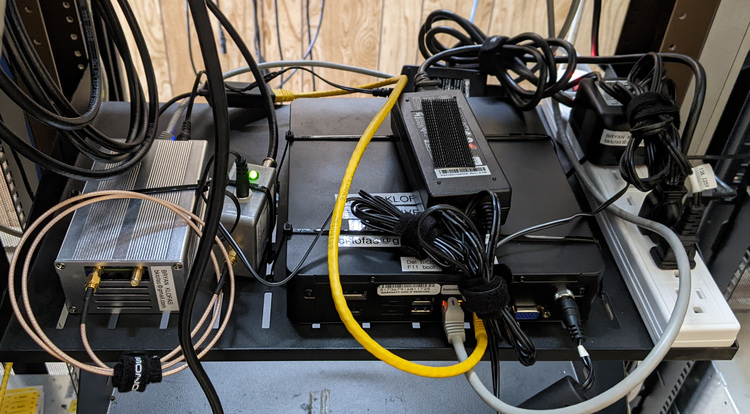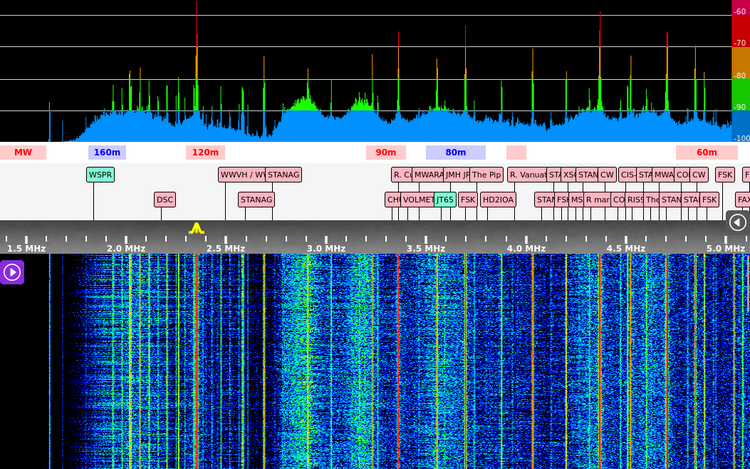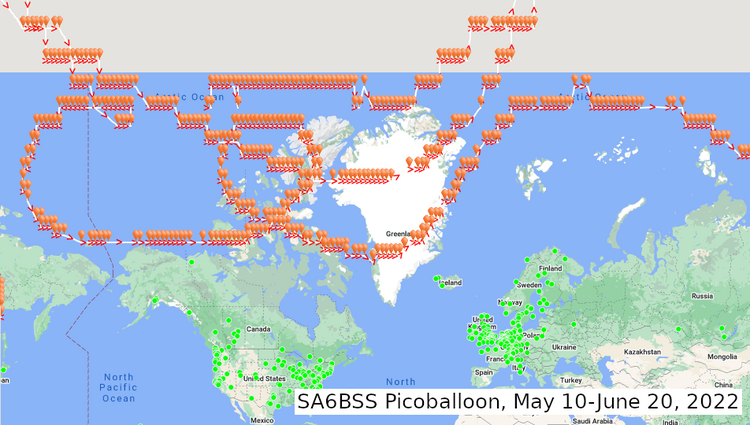I recently set up a Weak Signal Propogation Reporter receiver in the town of Inuvik, NWT. I was there in the beginning of June 2022, just as the world was opening back up from the COVID-19 travel restrictions.
I thought Inuvik would be an interesting place, as it's at 68 degrees North latitude, which is above the Arctic Circle. During the summer, the sun never sets from May 25th to July 19th. In the winter, the sun doesn't rise from Dec 6th to Jan 5th. But the sun does get close enough to the horizon to have civil twilight, where the sun is less than 6 degrees below the horizon, so it's not completely dark all the time in the winter.
From an RF perspective, I thought this would be a really interesting location for several reasons. What happens to HF propagation when the D layer is always present? Would 20 meters be alive all summer long? Conversely, what happens in the winter when it's only the E and F layers?
Hardware
The hardware for this receiver is almost identical to the WSPR receiver at home in San Francisco. To verify that everything works, I set it all up at home and let it burn in for a few weeks before my trip.

Since I wanted to be as unobtrusive as possible to the host site, having a huge dipole antenna, like I have at home in San Francisco, was out of the question. After researching various antenna types and talking with the local hams, I settled on a a W6LVP Mag Loop receive-only antenna. The loop antenna is on the right, with the town of Inuvik in the background.
This loop antenna has an LNA in the base, and also some high-pass and low-pass filters before the input to the LNA. The high-pass filter is set for 1700 kHz, and the low-pass is 45 MHz, allowing me to receive 1.8 MHz (160 meters) thru 30 MHz (10 meters). While I probably don't need the filters for Inuvik, I might bring the antenna back to SF or another RF-rich environment where the filters would be helpful.
Due to time constraints, I didn't end up installing the GPS antenna. The KiwiSDR can optionally use a GPS receiver for frequency calibration. Instead, I calibrated this receiver against WWV.
Inside the building, I zip-tied everything to a rack shelf. Not the cleanest, but everything stays in place if the shelf needs to move in the future.
You can view the latest WSPR reception from this station online at wspr.rocks.
Noise
As soon as I got the station installed, I noticed that there is a lot of local noise on the HF bands. Strong signals every ~335 kHz were causing lots of problems. Not bad enough to overload the KiwiSDR's ADC, but bad enough where the station was pretty deaf.
Unfortunately, I didn't have enough time when I was up in Inuvik to really diagnose or troubleshoot these interference problems. Some of it might be the other servers and equipment within the building, or noisy switching power supplies in the wireless ISP nodes on the nearby tower. It's most likely a combination of all of these problems.
First Balloons
Immediately after I got the station working, I received two picoballoons that were floating up in the Arctic. Picoballoons are very small, lightweight amateur radio balloons that are designed to "float" in the jetstream for months. These picoballoon rely only on solar cells for power, batteries are just too heavy.
On June 6th, I received the SA6BSS picoballoon over Nunavut. Mikael SA6BSS launched this balloon on March 21st, 2022, from Sweden. It is a clear Yokohama balloon filled with Helium with 8.5 grams of free lift. The payload weight is 6 grams total, including a small 0.5 gram magnet to slow the rotation and pull the tilted solar cells to south. Maximum altitude for the flight (so far) is 13,200 meters (~43k feet).
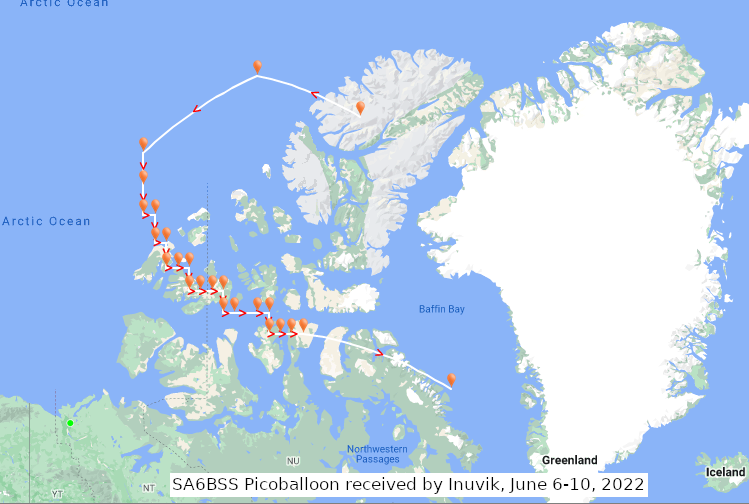
Due to the noise and other problems, I only received packets from SA6BSS when it was nearby. After it moved out of range, it kept circling the Arctic, and by the end of July 2022 it was over Kazakhstan.
The next picoballoon I received was launched by Walter K5WH in Texas.
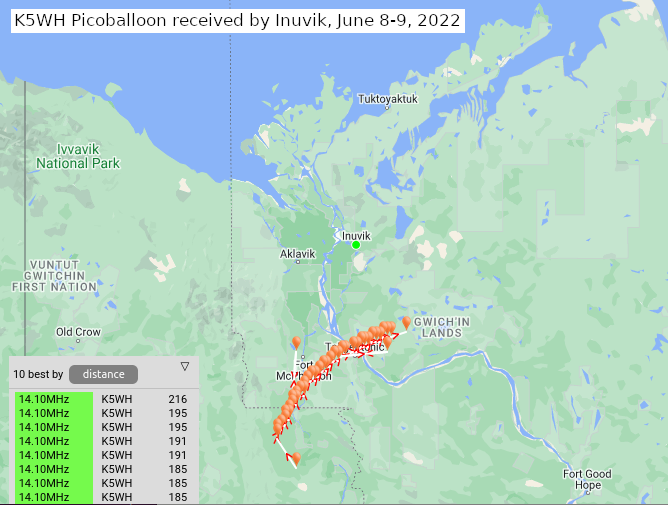
Much like SA6BSS, this picoballoon continued on over the Arctic. However, Walter's solar cell orientation wasn't as good as Mikael's, as this picoballoon turned off in the evening when the sun was still up but not straight overhead.
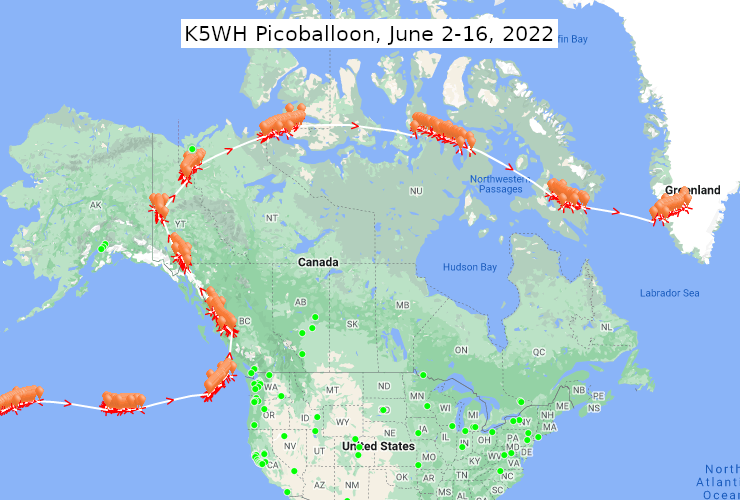
This picoballoon stopped transmitting on June 16th, when it was over Greenland.
Future
The station has been online and offline for the past two months, due to several issues. Here's the current fix-it list:
- Update the server BIOS. There's a bug in the current BIOS that flips the two networking interfaces occasionally on server boot. This is highly problematic, especially since the power is vary unstable at the site.
- Install a UPS to try and cut down on the amount of reboots.
- Automatically start the direct network connection between the KiwiSDR and the wsprdaemon server.
- Set up email notifications when wsprdaemon isn't running.
- Conduct a RF survey to see if more shielding or filtering will help with the strong noise.
Hopefully I will be back up in Inuvik soon to fix some of these problems.
